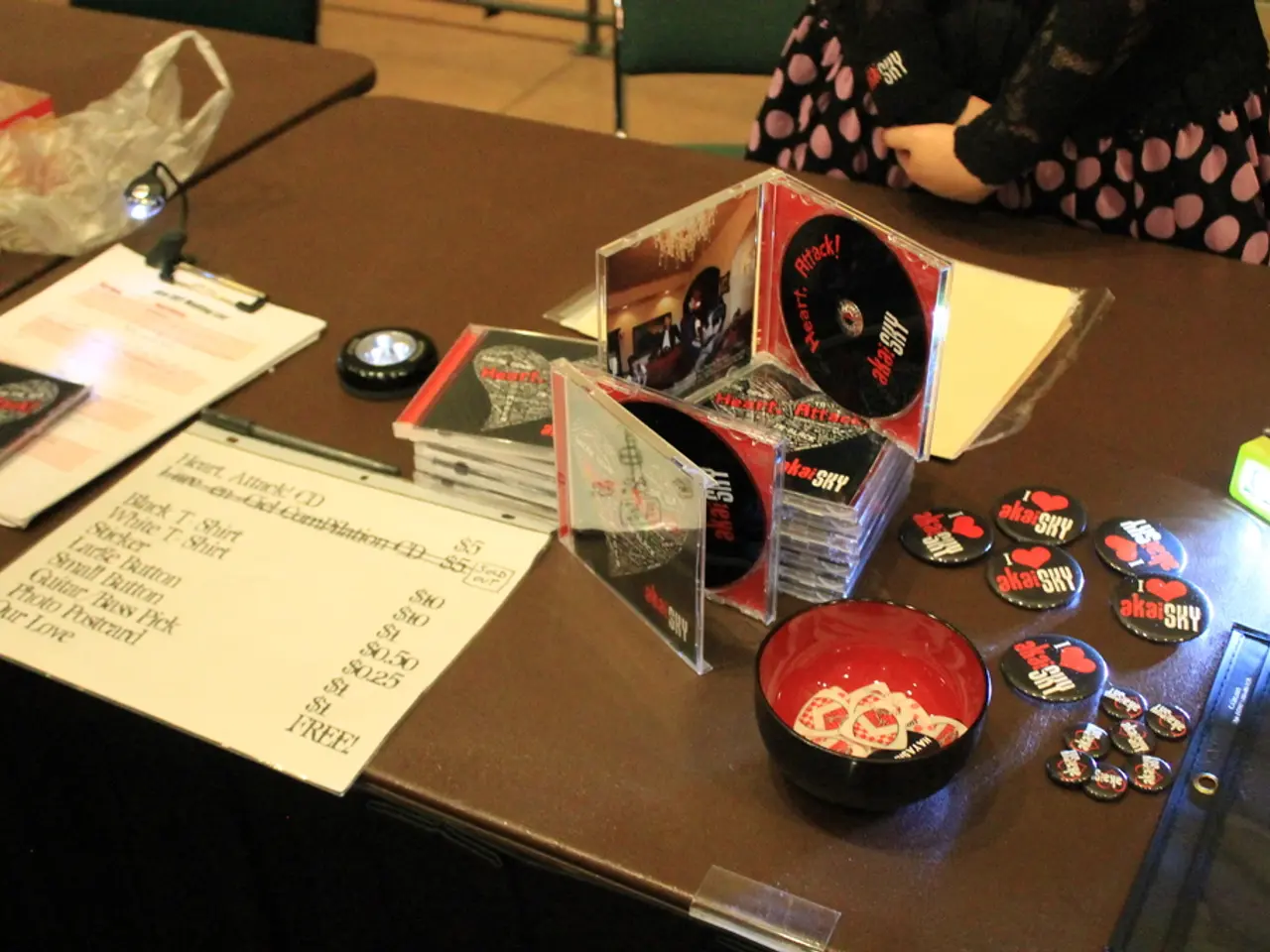Monitor and Visualize Data from Google Sheets using a Custom Analytics Interface
In the digital age, data analysis has become a crucial aspect of decision-making for businesses and individuals alike. One tool that simplifies this process is Google Sheets, a versatile platform that offers an accessible way to build dashboards without leaving your browser.
Step 1: Prepare Your Data Set
Begin by organizing your data in Google Sheets, ensuring it contains columns you want to filter by, such as categories, dates, or regions.
Step 2: Create the Dashboard
Create the visual components for your dashboard, like pivot tables and charts, on a new sheet dedicated to the dashboard. Arrange these charts logically for easy interpretation.
Step 3: Add Slicers
Add slicers by selecting Data → Add a slicer, then select the data range and the column you want the slicer to filter (e.g., Product Category or Date). The slicer will appear as an interactive filter next to the charts or tables.
Step 4: Connect Slicers
Connect slicers to your charts or pivot tables so that selecting values in the slicer dynamically updates the dashboard visuals. Multiple slicers can be used simultaneously to allow complex filtering.
Step 5: Customize the Slicer's Appearance
Customize the slicer's appearance (font, color, title) by clicking the menu (three dots) on the slicer and choosing "Edit."
Step 6: Share Your Dashboard
Share your dashboard with collaborators, who can also interact with the slicers to filter data in real-time.
This approach leverages slicers' capability to add interactivity and user-friendly filtering without altering underlying data, making dashboards dynamic and easy to explore.
Additional Tips
- Use a separate sheet for the dashboard layout to keep charts organized and clean.
- Group related charts together and add explanatory titles or notes to enhance readability.
- Adjust chart colors, fonts, and labels to improve visual appeal.
- While Google Sheets dashboards are effective for many needs, consider advanced tools like Looker Studio for more complex interactivity.
Creating Specific Charts
- To create a bar chart, choose two data ranges: one for the category axis (like Product Category) and another one for the value axis (using average aggregation).
- To create a pie chart, select the appropriate data ranges: one for the categories (like Product Category) and another one for the values (like total Revenue per category).
- Inserting a new chart and selecting the Bar chart type allows for comparing values across different categories.
Data Management
- Start by organizing your data in a clear, tabular format.
- The number of columns you include in your data range will determine how many dimensions your chart can display.
- You can upload a CSV file or connect Google sheet to a specific data source using its connectors.
Data Validation
Use data validation to create dropdowns for categories or statuses.
Trend Analysis
Line charts are ideal for tracking trends and changes over time.
A Google Sheets dashboard is a tool for visualizing project progress, comparing tasks, and identifying issues that require attention.
Resources like Google Sheets offer a simplified approach to creating data-driven insights, employing tools such as analytics and AI to analyze trends and make informed decisions in lifestyle, home-and-garden, data-and-cloud-computing, or technology sectors. Python and R can be harnessed to automate data analysis, while Looker Studio is suitable for more intricate interactivity.
Begin by preparing your dataset, ensuring it's organized with columns for categories, dates, or regions. Create the dashboard, complete with pivot tables and charts, on a separate sheet for easy interpretation. Add slicers to filter data using "Data → Add a slicer," and connect slicers with charts or tables to create a dynamic visual experience. Customize the slicer's appearance, share your dashboard, and collaborate with others in real-time.
For specific charts, choose two data ranges to generate a bar chart (e.g., Product Category and Average Revenue), or use appropriate data ranges to create a pie chart showcasing total revenue per category. Always remember to validate your categories or statuses using data validation. Line charts are essential for identifying trends and changes over time, making them valuable for lifecycle analysis and event monitoring.




